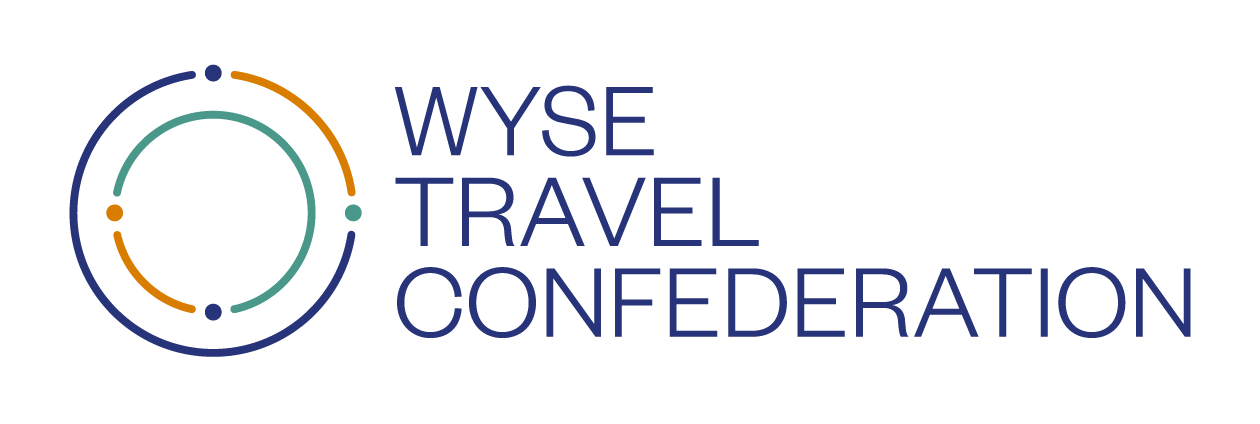While some businesses active in the youth travel industry are slowly getting back in operation after COVID-19 closures, organisations facilitating travel for educational and cultural exchange experiences face significant obstacles related to visas. Visa challenges represent a delay to recovery for not only cultural exchange organisations directly, but the youth travel industry more broadly. Following a spotlight on the educational and cultural exchange organisations last month, we take a look at data from the July edition of WYSE Travel Confederation’s COVID-19 Travel Business Impact Survey[1] and the impact of the United States’ suspension of the J-1 visa, one of the most popular cultural exchange programmes and destinations for youth worldwide.[2] We also consider the move of some cultural exchange programmes online and the direct and indirect impacts of visa uncertainty on the youth travel industry more broadly.
US Exchange Visitor Program and J-1 visas
The Presidential Proclamation signed on 22 June 2020 effectively suspended the issues of J-1 visas for the US Exchange Visitor Program through 31 December 2020 has already and will continue to have a significant impact on youth travel to the United States. Just under half (47%) of the respondents to the July edition of the COVID-19 Travel Business Impact Survey send or receive participants requiring a J-1 visa for the US Exchange Visitor Program.[3]
The number of youths entering the US with a J-1 visa in order to participate in the Exchange Visitor Program is set to reduce dramatically, with responding organisations indicating a drop from almost 2,000 participants in 2019 to 111 in 2020.
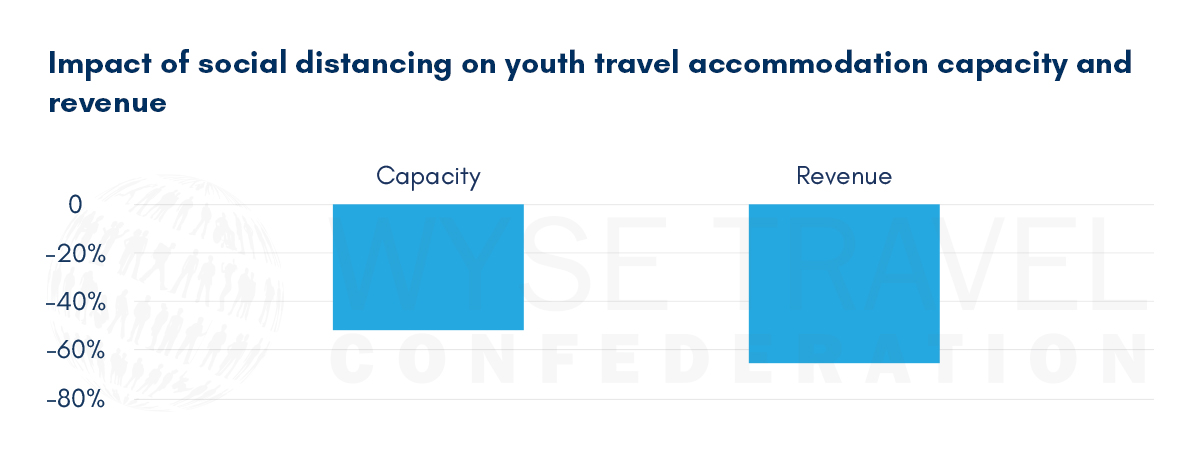
Sixty-five percent of respondents said that the suspension of J-1 visas will have a major negative financial effect on their business. Ninety percent of Sponsors said that the suspension will have a major negative financial effect on their business.
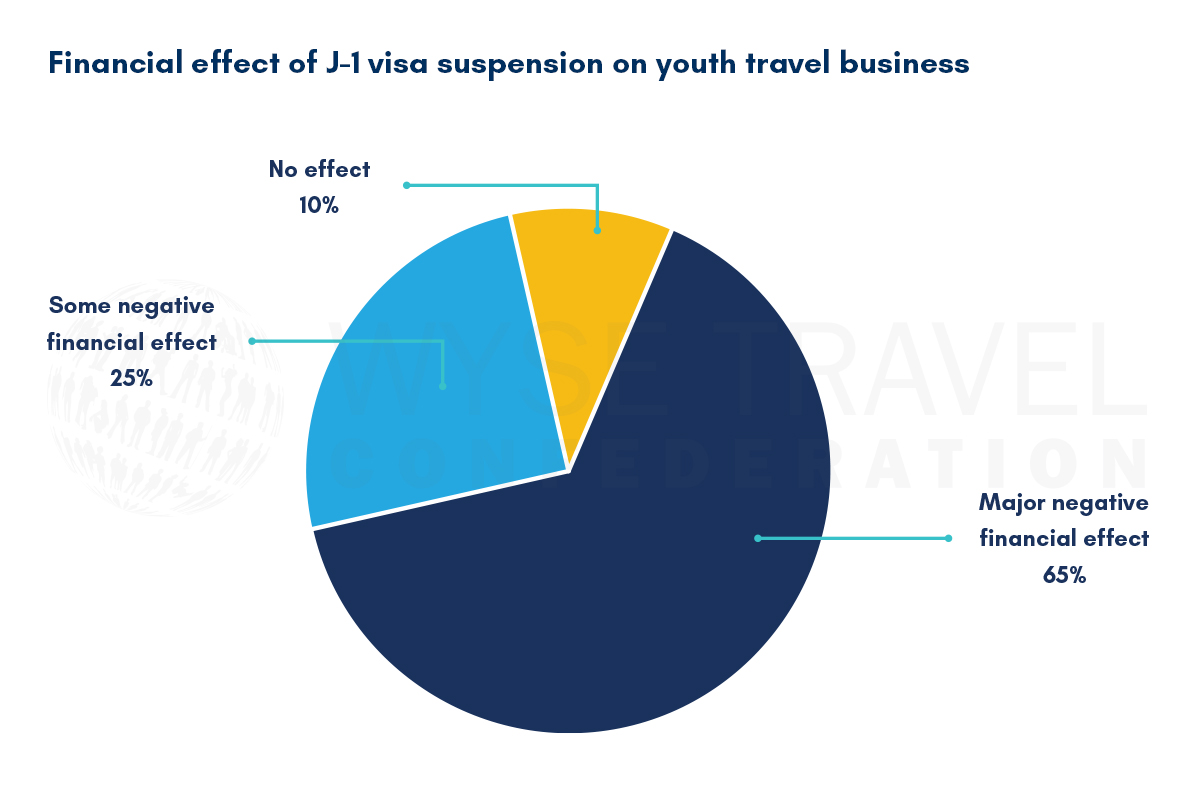
The financial impact is even more significant if we look at the breakdown of reactions according to the number of Program participants per organisation. Those indicating there would be little or no effect of the J-1 visa suspension were also those dealing with very few participants requiring the J-1 visa.
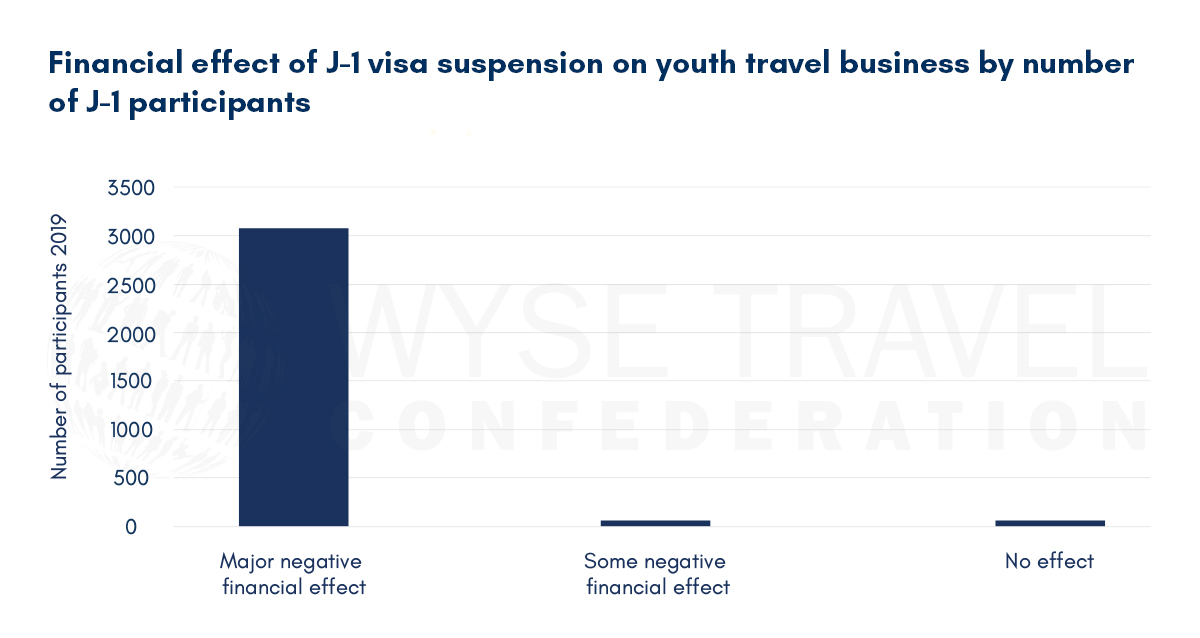
When asked what actions they were taking as a result of the ban, the most frequent response was identifying new destinations for exchange programmes (33%), waiting to see what happens (23%) or lobbying (21%). Agents are most likely to be identifying new destinations (38%) to send travellers and Sponsors are most likely to be lobbying (50%). Other actions include laying off staff and engaging with clients to defer to summer 2021.
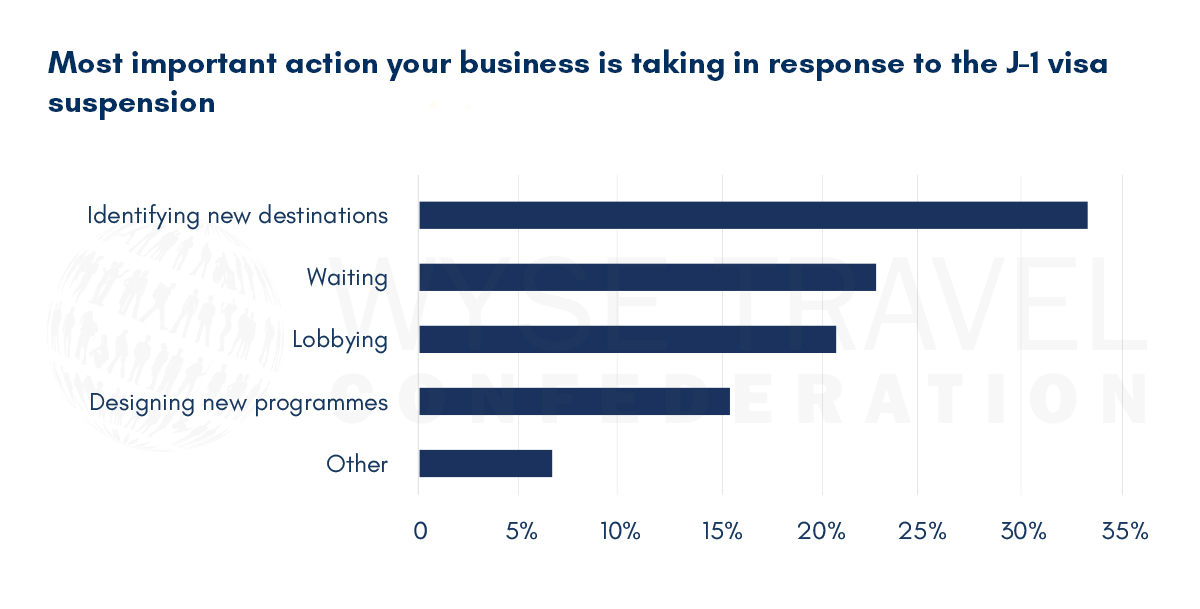
The largest organisations who expect negative effects as a result of the J-1 visa suspension tend to be those lobbying for change, but even those anticipating no effects are looking for new destinations for youth exchange programmes.
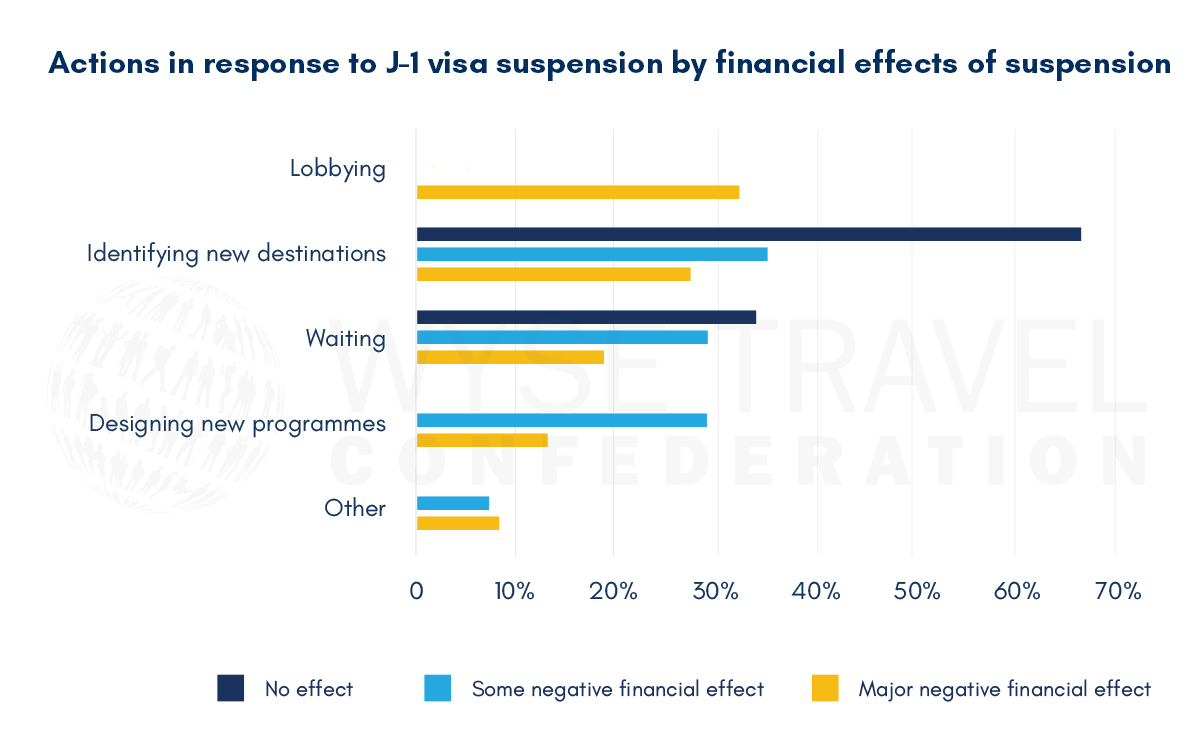
Cultural exchange moves online
The effect of COVID-19 on exchange programmes has already been significant, with responding organisations indicating that programmes for June to August will be reduced to 57% of normal capacity. With the J-1 visa suspension, this will be reduced to 20% of normal capacity for the period September – December 2020. For the whole of 2020, youth travel organisations estimated that 18% of youth travel programmes would be running online instead.
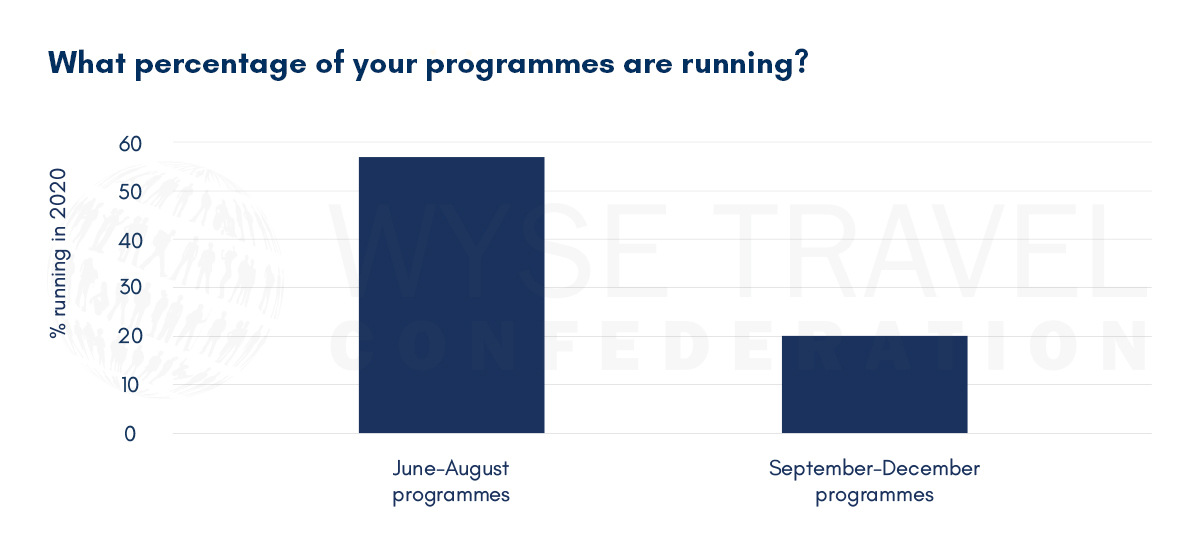
The language travel sector has adapted best to the new circumstances, but even then, responding organisations estimate that programmes will operate at less than 30% of capacity through December 2020 and 28% of normal language travel programmes are running online this year.
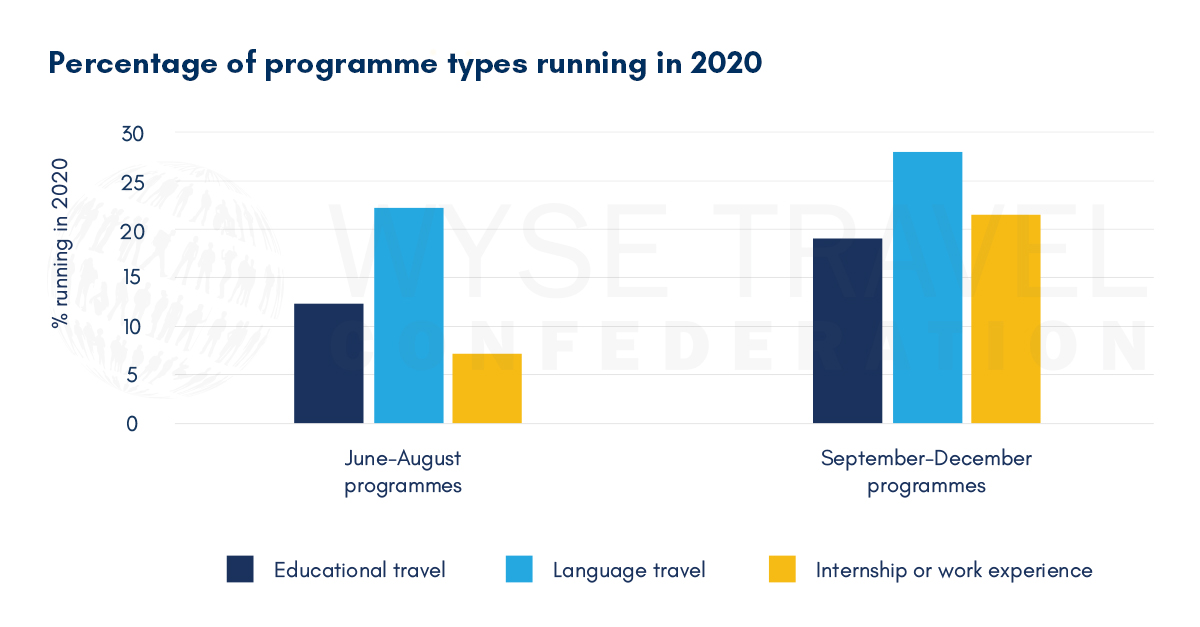
Roughly 15% of the normally scheduled educational travel programmes and internship or work experience programmes are running online in 2020.
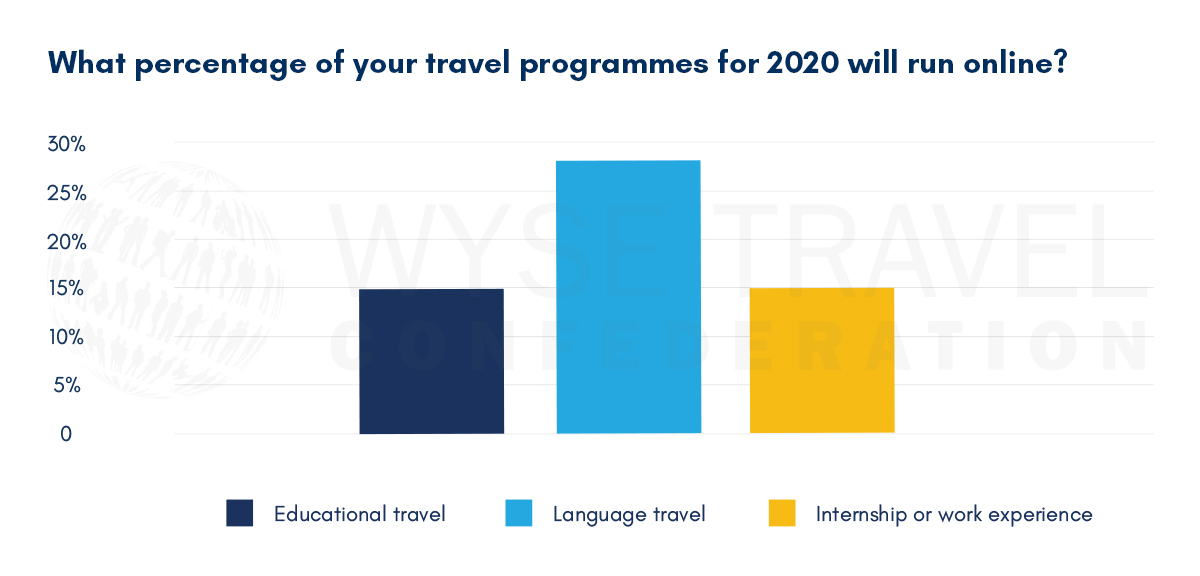
Remaining obstacles to cultural exchange
When asked what the biggest obstacles are for cultural exchange organisations to send or receive participants this year, the most frequently mentioned related to travel restrictions, border closures and the halting of visa processing. The weakening of reciprocity agreements and restrictions on school group travel were also mentioned.
Another major theme revolved around online programming. Some organisations feel that traditional cultural exchange programmes and immersion experiences simply cannot be replicated online. Others expressed doubt in developing new online programmes, foreign language instruction for example, as it would be difficult to compete with existing online providers. Educational and cultural exchange organisations also indicated there was a reluctance on the part of students and parents to adopt online programmes. These challenges are underlined by concerns about the cost to organisations to move programming online and the ability to validate such online products to consumers, suggesting that there are a number of organisations actively choosing to not go online and instead wait for travel as usual to resume.
Impact of visas and online programming on the youth travel industry
Visas have direct and indirect impacts on the youth travel industry at large. While international education and cultural exchange programmes face the most direct effects of visa regulations and the current need to move some programming online, providers of pre-trip and in-destination services will also suffer decreased demand from international student visitors.
WYSE Travel Confederation’s research on the international youth travel market shows that young travellers are activity-intense in destination. Research from Erasmus Student Network (ESN) indicates that youth studying abroad visit more local cultural activities in their host country than they would have in their home country. Given that the average lengths of stay tend to be fairly long for study abroad and cultural exchange via a working holiday, these types of international visitors are important economic contributors to local host communities and businesses.[4] Erasmus Student Network (ESN) also found that 25% of exchange students in Europe visited more than ten cities within their host country and an average of 3.2 countries during their study abroad period. The study also found that exchange students attracted an average of 4.1 visits during their exchange period and more than 40% of these stayed in paid accommodation for an average of four days.[5] Research commissioned by the Alliance for International Exchange has estimated that participants of the J-1 Exchange Visitor Program alone contribute more than USD 1.2 billion to the US economy.[6]
Accommodation, transportation, tour, activity, and attraction operators, along with local hospitality businesses, all benefit from the secondary leisure travel and activities that young travellers do during educational and cultural exchange trips abroad. While these businesses have re-opened and re-started in some destinations, they will likely face weakened demand from the international student market so long as programmes move online and uncertainty around visas for international education and cultural exchange programmes remains.
WYSE Travel Confederation and the COVID-19 Travel Business Impact Survey
If your business would benefit from unique business insights on the youth travel market, industry representation for common business interests and new trading opportunities with international partners, we invite you to discover the resources of the global trade association for businesses serving young travellers, WYSE Travel Confederation. Meet us at the World Youth and Student Travel Conference (WYSTC) Online 7 – 9 October 2020.
Next survey in the series
WYSE Travel Confederation will repeat the COVD-19 Travel Business Impact Survey in August 2020. As with past travel business crises that we have monitored, it is important for the industry to come together and take its collective temperature. Given that youth aged 15 to 29 represent 23% of international arrivals, all travel businesses, regardless of their focus on youth-tailored travel products, are welcome to participate in the survey.
[1] Data for this report were collected between 3 and 13 July 2020 by WYSE Travel Confederation, the global association for youth, student and educational travel organisations, via web-based questionnaire in English. The survey was the fourth in a series titled COVID-19 Travel Business Impact Survey. The fifth iteration of the survey attracted 370 responses from 70 countries. Three-hundred and fifty-five responses were retained for analysis. Respondents included organisations specialised in youth travel products as well as those representing mainstream travel products, members and non-members of the association. All respondents were asked about the impact that the COVID-19 (Coronavirus) pandemic has had on their business in travel. Questions related to change in demand, outlook for 2020, main concerns and actions taken in response to COVID-19 have been repeated across surveys. New questions related to marketing, messaging to consumers, and business participation at large-scale B2B events were added to the fourth iteration of the survey.
The profile of respondents to the fifth survey in July 2020 was similar to that of respondents of previous surveys, however there was a small increase in the proportion of language travel programmes and other services compared to previous months. Youth travel specialists, defined as those organisations with over half their main business in the youth market, consistently made up 60% or more of respondents between March and June though the youth travel focus is slowly declining over time.
[2] The US is the most popular work experience and travel destination for youth globally. Agents sending youth to the US to participate in SWT must work with government-designated Sponsors who are based in the US and responsible for participants during their stay. Agents and Sponsors sell a range of travel products and services to SWT participants, including flights, accommodation, activities, transportation, insurance, and preparatory courses. Youth travellers participating in such work experience programmes typically spend more in the destination than they earn during their stay, representing positive economic value to the destination. The main benefits of such programmes, as reported by participants, are improved language skills, more appreciation of other cultures and a desire to live abroad. [sources: WYSE Travel Confederation Summer Work Travel Survey, 2019 and New Horizons IV: Work Experience Travel, 2017]
[3] The Exchange Visitor Program (EVP) of the United States provides opportunities for about 300,000 foreign visitors from 200 countries and territories each year to experience American society and culture and engage with US citizens. Eighty-five percent of EVP participants are age 30 or younger. The Exchange Visitor (J) non-immigrant visa category is for individuals approved to participate in work-and-study-based exchange visitor programmes. In 2018, the Summer Work Travel (SWT) Program, one of 15 EVP categories affected by the Proclamation signed on June 22, 2020, included just over 104,500 participants. [source: US Department of State]
[4] New Horizons IV: Work Experience Travel, WYSE Travel Confederation, 2017.
[6] Alliance Opposes J-1 Inclusion in Presidential Proclamation on Immigration, June 22, 2020.
